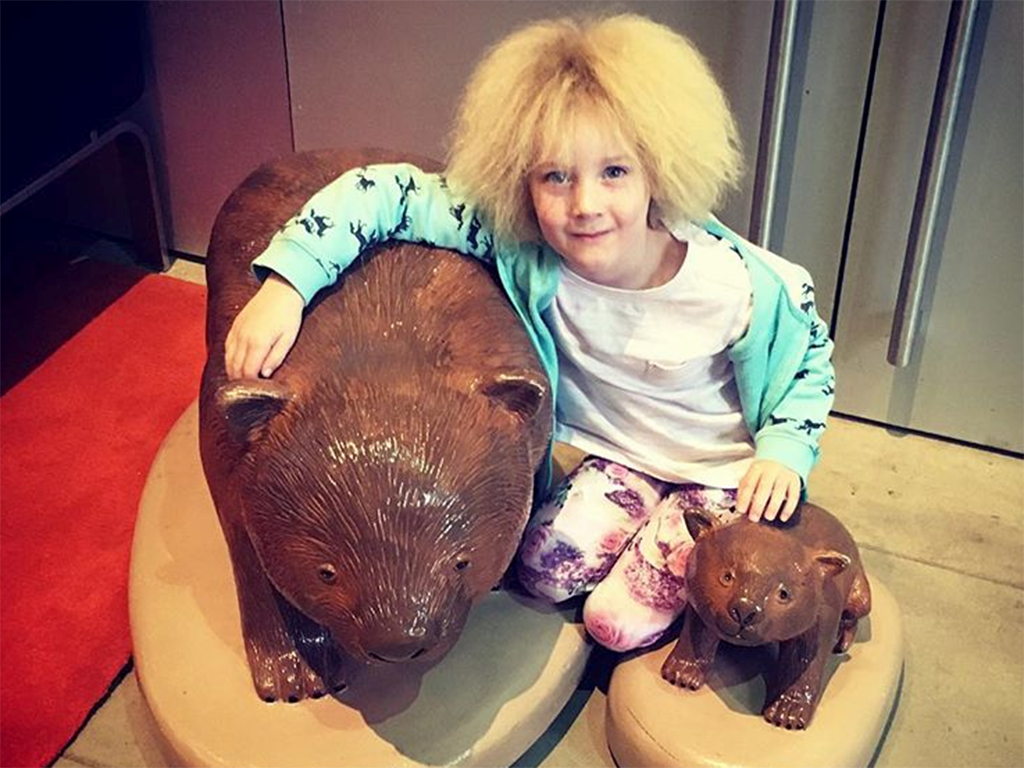Talk about giving new meaning to the phrase “big hair, don’t care.” A seven-year-old girl in Melbourne, Australia, has taken to Instagram to celebrate her ample and uncontrollable mane of blonde locks.

WATCH BELOW: Women and extreme hair loss

Shilah Calvert-Yin was diagnosed with uncombable hair syndrome (UHS) nine months ago, and although she is often compared to wild-maned scientists like Albert Einstein and Doc Brown from Back to the Future, the spunky schoolgirl says she loves how her hair distinguishes her from other kids.
“It’s not ordinary and it’s not boring like everyone else’s,” she said to the Daily Mail. “Everyone knows me and remembers me — especially at school; all the grade levels know who I am.”
Shilah’s mother Celeste says her daughter first displayed signs of the disorder when her hair started to come in at three months, but she wasn’t diagnosed until recently. And while she will now tell people about her daughter’s condition, many think it’s a joke.
“Adults can be just as juvenile and say some of the most random things, or take photos of her and even touch her hair,” she said.
UHS is a rare disorder of the hair shaft that occurs due to a genetic mutation in the hair, says Caroline Ruggiero, a trichologist and president of Truly You Hair & Scalp Clinic in Streetsville, Ont. It can be inherited from either the maternal or paternal side, and it can skip a generation.
READ MORE: Scientists stumble upon breakthrough in battle against baldness, grey hair
But there’s good news surrounding UHS. In the majority of cases, once children reach puberty, the hair shaft and structure become normalized, which means hair becomes much more manageable. Most importantly, most of the time, it’s also not linked to other health issues.
“Parents and their kids come in to see me and they’re very stressed, but it’s rare that this disorder is related to anything else,” she says.
According to the National Centre for Advancing Translational Sciences, UHS is mostly isolated, but in some cases it has been linked to ectodermal dysplasias (a group of genetic disorders of the teeth, hair, nails and sweat glands), Bork syndrome and Angel-shaped phalangoepiphyseal dysplasia (a genetic bone development disorder).
There isn’t much that can be done in terms of treatment, Ruggiero says, but she recommends a specific scalp regimen that includes good quality, pH balanced hair care — “definitely not baby shampoo as that’s far too alkaline and can lead to other scalp issues” — and biotin, a B-complex vitamin that helps to restructure the hair.
READ MORE: Single dad masters the art of styling his daughter’s hair and gives us #hairgoals
“You want to keep the stress on the hair at a minimum, so don’t try straightening it with heat,” she says. “Keep anything abrasive, or any lotions and potions that are advertised specifically for kids, away from the hair and especially the scalp, because it will create more damage.”
She says natural, neutral hair care products and oils can be used on the ends, but ultimately, let it be. The hair will restructure itself over time.
And if any kid is fretting over their unique hair, have them take a page out of Shilah’s book of confidence: “I think my friends wish they had hair like mine.”




Comments